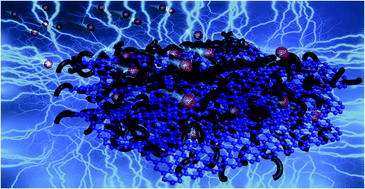Transition metal selenides have attracted enormous research attention as anodes for lithium-ion batteries (LIBs) due to their high theoretical specific capacities. Nevertheless, the low electronic conductivity and dramatic volume variation in electrochemical reaction processes result in rapid capacity fading and poor rate capability. Herein, a metal–organic framework is used as a template to in situ synthesize Sb2Se3 nanoparticles encapsulated in N-doped carbon nanotubes (N-CNTs) grafted on reduced graphene oxide (rGO) nanosheets. The synergistic effects of N-doped carbon nanotubes and reduced graphene oxide nanosheets are beneficial for providing good electrical conductivity and maintaining the structural stability of electrode materials, leading to stable cycling performance and superior rate performance. Kinetic analysis suggests that the electrochemical reaction kinetics is dominated by pseudocapacitive contribution. Notably, a high discharge capacity of 451.1 mA h g−1 at a current density of 2.0 A g−1 is delivered after 450 cycles. Even at a high current density of 10.0 A g−1, a discharge capacity of 192.6 mA h g−1 is maintained after 10 000 cycles. When coupled with a commercial LiFePO4 cathode, the full batteries show an excellent discharge specific capacity of 534.5 mA h g−1 at 0.2 A g−1. This work provides an effective strategy for constructing high-performance anodes for Li+ storage.

